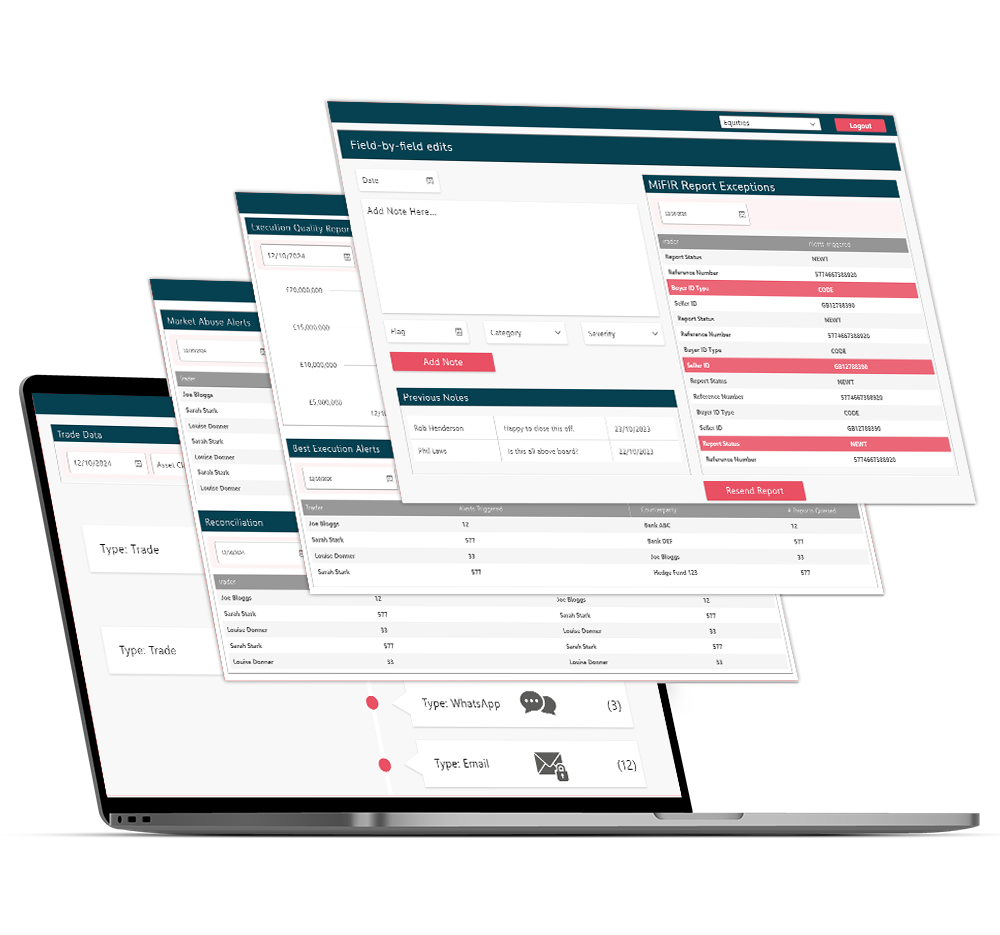TZTR Transaction Reporting solutions for EMIR

A unified solution to your EMIR reporting challenge
eflow’s TZTR Transaction Reporting technology has been engineered to enable financial institutions to manage all aspects of their EMIR reporting obligations from a single digital platform.
The problem
Under EMIR, which aims to boost transparency and reduce systemic risk in derivatives trading, financial and non-financial counterparties must submit 203 data fields per transaction to a Trade Repository under tight deadlines. This means that collating the required data manually is a resource-intensive task that also greatly increases the risk of the reporting errors that will make a firm non-compliant.
The solution
eflow’s TZTR automates the entire EMIR reporting process from data collection to final submission, handling all 203 required data fields and connecting directly to Trade Repositories. Its field-by-field error correction and real-time feedback integration deliver a seamless, compliant reporting experience.
How TZTR simplifies your EMIR reporting processes
eflow’s TZTR platform is a scalable, adaptable solution for firms managing complex EMIR and MiFID II reporting requirements, providing a unified compliance system, seamless migration without disrupting existing processes, and dedicated onboarding support from eflow’s customer success team.
A holistic regulatory approach
Quicker and more efficient processes
Improved governance
A flexible, scalable compliance tool
Tailor your platform to fit your strategy
Technology that evolves with you
‘Always on’ audit trails for complete visibility
‘Regulator ready’ reporting at the click of a button
EMIR transaction reporting technology that evolves with your business
A comprehensive EMIR solution
A fully integrated transaction reporting solution for EMIR, all managed from one digital hub
Data enrichment
Automated data enrichment for all alerts and asset types from the eflow Market Data Store which curates data from more than 250 sources
Trackable platform use
Gain insights on how your compliance team is interacting with the system and view full internal audit trails
Automated reporting
Error handling, automatic submissions and field-by-field editing all included as standard
Retrospective testing
Back-test trade data to ensure robust, retrospective compliance
Seamless connectivity
Digitally connected to the relevant Trade Repository for seamless report submission
Robust data validation
Automatically cross-references all records received against the FIRDS register to ensure eligibility
Expert onboarding
Full access to eflow’s customer success team while we onboard you on to TZTR
Painless migration
Seamless migration from your existing system to ensure zero periods of ‘regulatory downtime’

Being able to implement eflow’s solutions for trade surveillance, best execution and transaction reporting was more efficient, reduces our overheads, and provides us with a holistic regulatory technology solution. As a result, working with eflow was an obvious decision.
Our latest insights on EMIR reporting

EMIR reporting explained – What you need to know
Blog
Not sure where to start with EMIR reporting? Our blog explains the history behind the legislation, what’s involved, and how firms can ensure they remain compliant.

